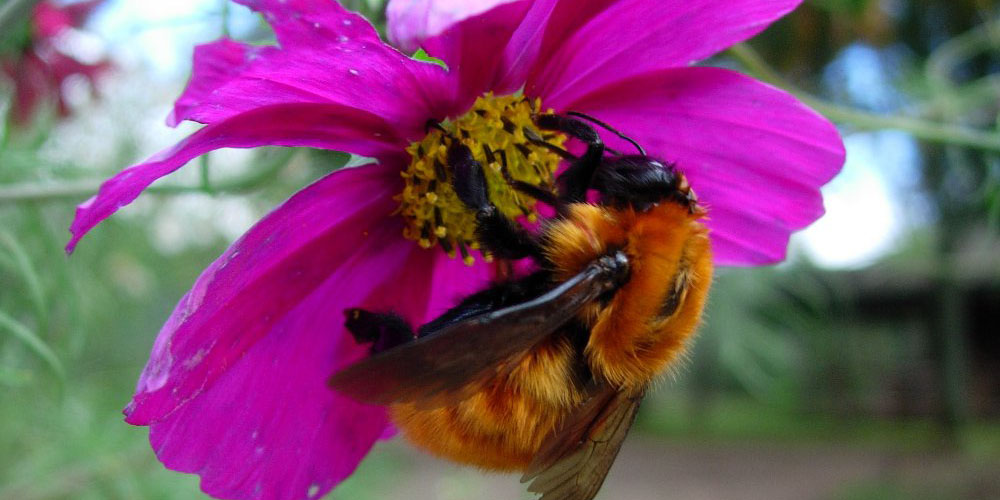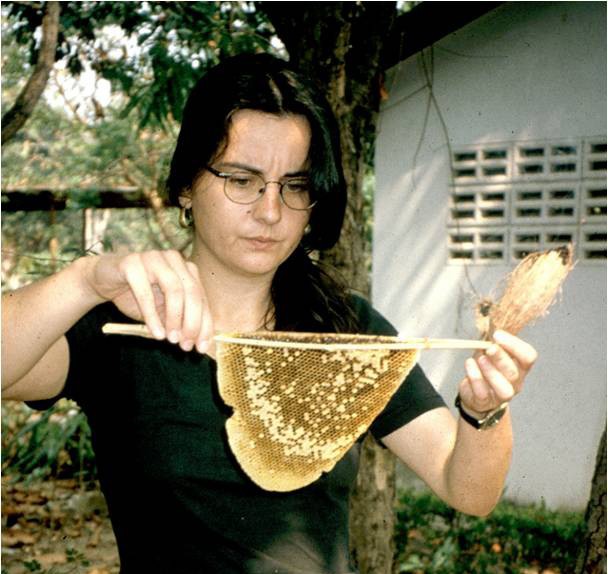Pollinator decline, especially bees, is still getting quite a bit of attention these days. However, an essential point still doesn’t get enough attention: Not all pollinators are the same. Not all regions are the same. Not every measure will have the same effect everywhere. This seems trivial if you’re dealing with this topic for some time. But apparently, it isn’t. The focus of both public and policymakers is on honey bees. Not even bees in general, which would still exclude other pollinators. Many started beekeeping to “save the bees”. This is wrong at so many levels, but today I want to focus on the consequences for bee diversity.
I often work in Italy. Even without knowing anything about bee diversity hotspots, I would have noticed that there are so many species I don’t see in Germany. Bee diversity thrives in the Mediterranean climate. However, data on pollinator decline mostly come from regions with lower bee diversity, like Central Europe. And so do measures to help pollinators. A paper from Carlos Herrera, a Spanish ecologist, discusses very impressively the consequences of this geographical bias together with the species bias on honey bees has.
Honey bees replacing wild bees
The most important sentence of this paper may be the very first one:
The structure and dynamics of ecological communities can vary tremendously across biomes.
A biome is a community of animals and plants that have certain traits in the response to the environment they live in. This is crucial: pollinator communities in the Mediterranean are different from those in Central Europe. They have different life histories and needs. They react differently to environmental changes. On the other hand, conservation or agroecological measures like flower strips look very similar throughout different European regions.
Anyway: Professor Herrera focussed on the proportion of wild bees to honey bees foraging on 200 different plant species between 1963 and 2017. He analysed studies with wild plants and crops from 13 countries in the Mediterranean basin. He found that the proportion of bees visiting plants shifted significantly towards honey bees. In 1963, bee visitors of both wild and farmed plants were mainly wild bees (84% and 76%, respectively). In 2017, the proportion almost leveled out: 59% of the bees visiting wild plants were wild bees and 41% honey bees. On crops, only 44% were wild bees, while the majority of the bees (56%) were honey bees. This adds to the public impression that bees equal honey bees.
Pollinator decline not represented by honey bees
To be honest, these numbers concern me. The situation may be worse, considering that Northern Africa and the Middle East are not well represented by the published studies. I wonder how much information may be hidden in Arabic or other languages. In addition, also European Mediterranean countries aren’t that well studied: from the research Herrera analysed, 159 studies were done in Spain. Fair enough, Spain is also the country with the highest number of bee species in Europe. But already number 2 on the list, Italy, is represented by only 59 studies and number 3, Greece with 15.
Even those who still call honey bees the “most important” pollinator, recognize that it’s not the most endangered one. Spain had almost 3 million honey bee colonies in 2018, compared to 2.4 million in 2003. This trend is the same in other countries in Europe. According to the European Commission, the only member states with declining numbers of honey bee colonies are the UK, Luxembourg, and Cyprus. Unfortunately, when writing this, the UK isn’t a member of the EU anymore… Anyway, the general trend is that the number of honey bee colonies increases throughout Europe. This also makes clear that the pollinator decline isn’t represented by honey bees.
Pollinator communities are changing
In this context, Herrera’s analysis is even more alarming. Considering the shift in bee species visiting the flowers, this presumably will get worse if the beekeeping trend continues. The ecologist points out that the Mediterranean is a world hotspot for wild bees and wild bee-pollinated plants. Honey bees don’t replace their non-managed relatives as pollinators. In addition, we know that pollinator diversity keeps pollination systems stable. It’s a common misconception that all pollinators are the same. They’re not, there are plenty of data proving that.
Another question I wondered about while reading Herrera’s analysis: if there’s such a shift in bee flower visits already in areas where honey bees are native – what’s the situation in areas where they’re not? Actually, I often read “native bees” as a synonym for wild bee species. This is true for other hotspots for bee diversity like California, Northern Chile, or Australia. How did the pollinator communities change over time with increasing beekeeping activities in these areas?
Pollinator decline and pollinator conservation
However, the pollinator decline may look completely different in Mediterranean countries than in the better-studied West-Central European areas. Promoting beekeeping as a measure to increase biodiversity is completely wrong and may even have negative consequences for other bee species. As Professor Herrera states it:
In Mediterranean countries, such actions [i.e. promoting beekeeping] would not only be aiming at the wrong conservation target but, much worse, could be inadvertently threatening the unique regional diversity of wild bees, wild bee-pollinated plants, and their mutualistic relationships.
Herrera 2020
Therefore, we have to inform people better. Get them closer to bee diversity. Seeing the beauty and importance of it. People want to help, they want to do good. It’s our responsibility they get the right information and are able to make good decisions. Those who want to start beekeeping should know about the responsibility this means. It’s fun, but you should do it the right way.
Practical consequences
Obviously, we need more data like this to evaluate the consequences for conservation work, agroecological schemes, or promoting or limiting beekeeping in certain areas. Yet, Herrera’s analysis makes clear that we need to acknowledge the differences between bee species and regions. Measures to halt the pollinator decline can’t be generalized, they won’t work equally in all regions. Instead of flower strips that always look the same, it makes much more sense to evaluate the situation case by case. And to choose measures that adjust to the pollinator species present in the area. Respecting the diversity of biomes.
For instance, this could mean restoration and protection of habitat. Regional seed mixtures for flowering strips. This means research and, most importantly, monitoring the efficacy of these measures. As a farmer said in panel discussion we both participated: “Learning while doing and adjusting.”. Good advice for many areas in life, in my opinion. In addition, this creates a sense of identity and responsibility lacking in standardized measures. At least in my humble opinion.
The role of beekeeping
In addition, beekeeping is a legitimate activity, but it doesn’t “save the bees”. If it’s promoted as a source of income, that’s a different story. In this case, it’s important not only to subsidize beekeeping equipment, rationalization of transhumance and restocking of hives. Although a big chunk of the EU budget for beekeeping goes to combating “beehive invaders and diseases” (26%), the other mentioned areas get much more. As a participant in a discussion round last January exclaimed: “These subsidies help beekeepers, not the bees!”.
Again: this is legitimate. But please, don’t sell it as “saving the bees”. Almost 14% of the EU subsidies for apiculture go to the restocking of hives. In my humble opinion, it would make much more sense to spend at least part of this money on more effective education and consulting services for beekeepers. If they knew more about adequate health management, they would lose fewer hives… Especially, as we have increasing evidence that honey bees transmit their pathogens to other bee species. Good management practices then become important also from a conservation perspective. Of course, all these measures are expensive and work-intensive. But in the end: isn’t it better to do the right things, adjust as needed, and really counteract pollinator decline? Or is it the aim to just be able to say “we’re doing so much for the bees!”? Just saying…
This post is part of my quest against simplification and black and white thinking represented by claims like “save the bees!”. In my talks and courses, I draw a more complete picture. Subscribe to my newsletter (scroll down to “keep current with BeeSafe”) to know more.



